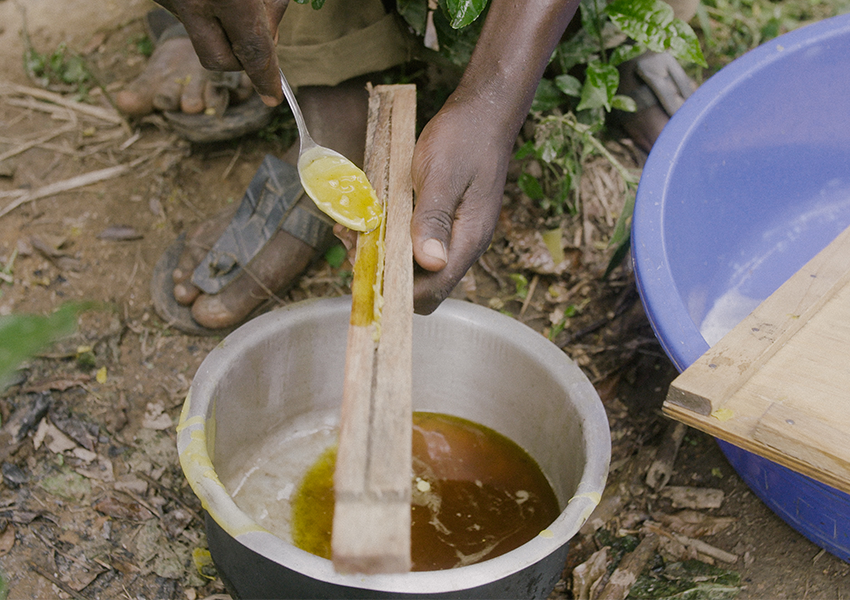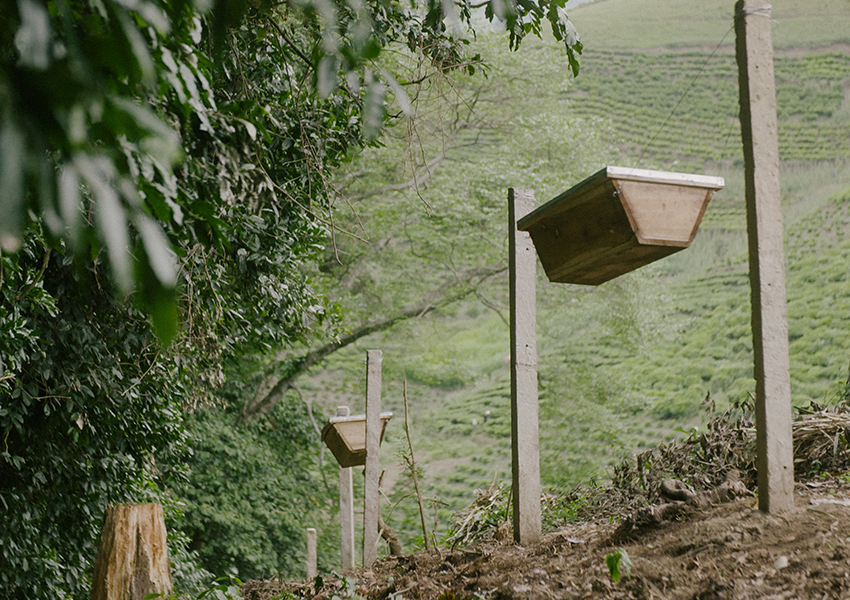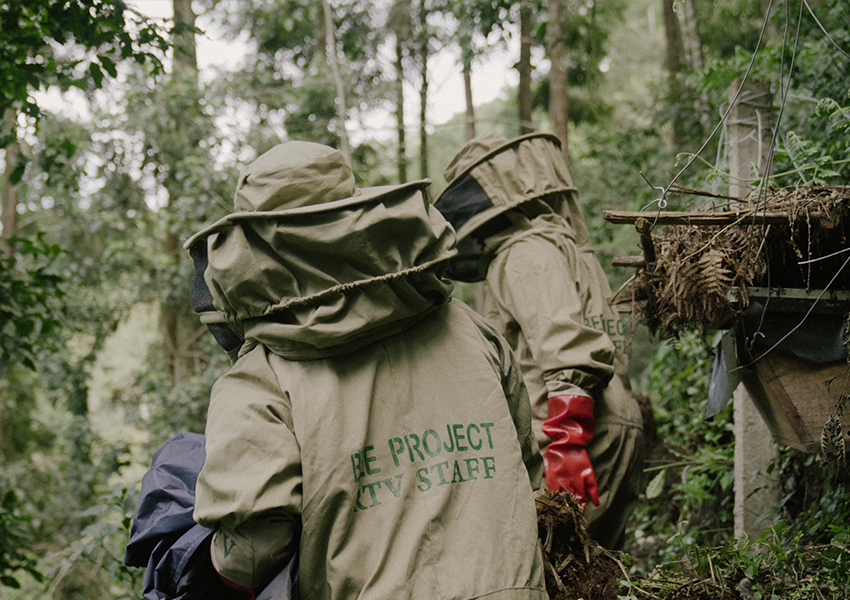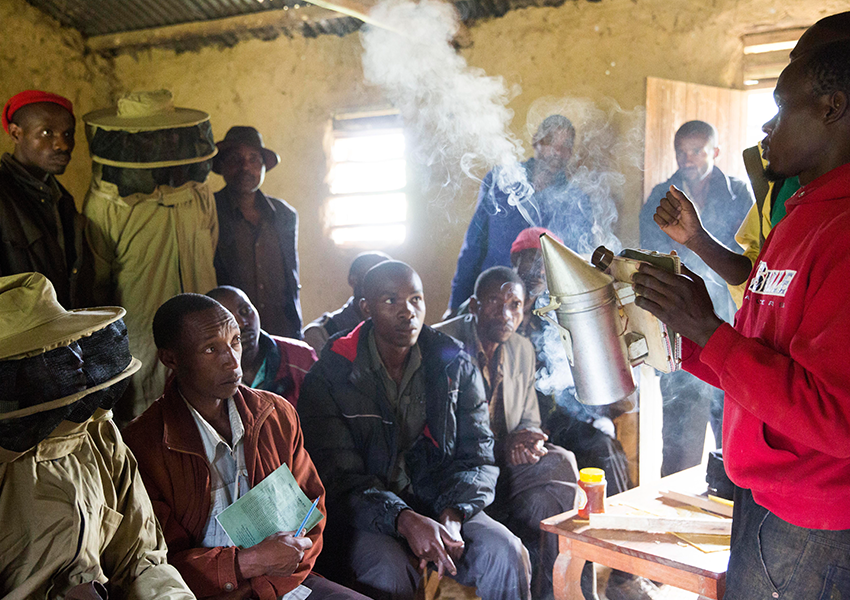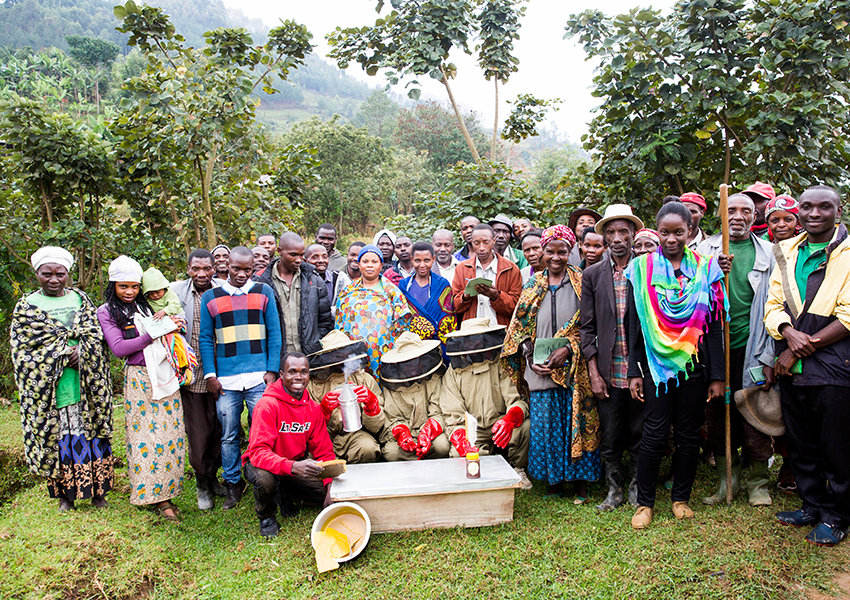Understanding The Problem
The Bwindi Impenetrable Forest in Southwestern Uganda is home to critically endangered mountain gorillas, as well African forest and bush elephants. The creation of this protected reserve and an enforced hunting ban have helped the elephant population—once decimated by poaching—begin to recover. However, growing human population in the region has led to increased human-animal conflicts as elephants venture beyond the confines of the park to raid crops in neighbouring villages. This can result in absolute catastrophe as just one elephant is able to destroy an entire season’s crops in a single raid, placing the entire family at risk of starvation. Children were tasked with protecting the fields by throwing stones at making noise to scare off encroaching elephants. Unfortunately this method brought little success and even worse, the children would regularly miss school in order to protect their fields. The problem persisted forcing many households to abandon their fields to avoid wasting precious resources, resulting in fallow fields.
See The Beehives In Action
See how this creative solution has become an effective way of deterring elephants from destroying village crops.
We Can Work It Out
Raising The Village engaged community members, the local district government, and the Ugandan Wildlife Authority to discuss new community-designed programs and possible resolutions to persistent problems. Community surveys, technical consultations, and group discussions were conducted to understand the social and economic situation in each village, and identify key issues. One of the main priorities identified by community members was the protection of farming fields from elephant raids.
The Elephants and The Bees
Raising The Village proposed the construction of a beehive fence along routes taken by elephants to access the farming fields. While elephants do not have any natural predators, they have a strong aversion to bees making beehive fencing an effective deterrent. The proposed southwest fence consisting of 593 beehives would stretch across multiple villages, covering 6 kilometres of access points along the mountainous terrain and river valleys of the national park. In the north, a 5.35km fence was completed in February consisting of 1,110 concrete poles with 167 local hives and 318 KTB hives. Not only does the beehive fence prevent elephant crop raids, but it also creates a new opportunity to generate supplementary income through the production of honey and bee-by products to meet local demand. While at first the community members had some reservations about the fence, they were hopeful in the outcome and committed the time and work to implement this initiative.
Training, Preparation, and Construction
Raising The Village invited apiary experts from Makerere University to train village members the fundamentals of beekeeping. There was great excitement as village members learned and prepared to become beekeepers. As part of our method, follow-ups with experts have continued to ensure that everything remains on track and the village members feel supported. We engaged local businesses to source and supply beehive and fence materials, creating a sense of local ownership in the initiative. Radio announcements and village meetings were leveraged to source area suppliers who would otherwise be difficult to locate. With the support of the indigenous Batwa community, elephant routes were tracked to ensure that no route was left unprotected. Over a period of 3 months, community members spent countless hours in rain and sunshine to erect the fence poles along the demarcated buffer zone of the reserve. Where the delivery trucks could no longer pass, stones, sand, and 1,100 concrete poles were carried 2 kilometers by foot to their final destination into the mountains. With each pole weighing over 70 kilograms, a single pole would be a day’s work for an exhausted team of villagers.
Sourcing and Raising Bees
Hives were immediately seeded with startup colonies to ensure the effectiveness of the fence from its inception. The fragile nature of the honeycombs required the hives to be carefully transported to their final destination. This meant that driving through mountainous terrain was not an option. Village members had to carry each hive on foot, traversing over 35 kilometres from the drop-off point to the final destination in the mountains. The successful seeding of these hives is the beginning of a new chapter of livelihoods for these villages. Community members have now embraced their new role as beekeepers and adopted inspecting the beehive fence into their daily routine.
Success and Moving Forward
To date, the elephant beehive fence has been proven successful at deterring 100% of attempted elephant raids this past growing season. Villagers have reported the elephants refusing the pass through the fence at the very scent of the hives. The early success of the beehive fence has created a renewed optimism among villagers, with many households expected to replant fallow grounds as they plan for the upcoming growing season. There is a growing excitement as we near the first harvests of honey. We look forward to continuing to track and report the progress of the beehive fence, with plans to expand the fence into other communities in the region. The first cluster of our village partners successfully harvested 308 kilograms of honey valued at $928.00 USD, with the next harvest due shortly. The beehives continue to be seeded and maintained as we near the midway point of the project. The momentum of this initiative and the excitement of our village partners has been sweeter than honey.


